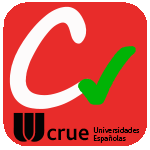Title
A virtual design methodology to improve the dynamics and productivity of large milling toolsPublication Date
2025Version
PostprintDocument type
Journal ArticleJournal ArticleLanguage
EnglishRights
© 2025 The Society of Manufacturing EngineersAccess
Embargoed accessEmbargo end date
2027-01-31Publisher’s version
https://doi.org/10.1016/j.jmapro.2025.01.024Published at
Journal of Manufacturing Processes Vol. 134. Pp. 1096-1113. January, 2025Publisher
ElsevierAbstract
Large cutting tools are widely used in sectors such as automotive, where complex shape aluminium components are machined at high cutting speeds, in a single clamping and in short cycle times with elev ... [+]
Large cutting tools are widely used in sectors such as automotive, where complex shape aluminium components are machined at high cutting speeds, in a single clamping and in short cycle times with elevated Material Removal Rate (MRR). However, their relatively low stiffness and natural frequencies make chatter the primary productivity limitation. Developing optimised tools to overcome these limitations is often cost-prohibitive with current design methods. This paper presents a virtual design methodology for optimising large milling tools to mitigate chatter through topology optimisation and Finite Element Modal Analysis (FEMA). Topology optimisation enhanced tool dynamics, enabling chatter reduction under higher productivity conditions. An improved FEMA model was developed to accurately predict the modal parameters of the cutting tools, featuring a high-fidelity representation of the tool-holder clamping to the spindle. The predicted modal parameters enable cost-effective chatter prediction for tool design validations, minimising development and experimental costs. To validate the methodology, a prototype of the optimised tool was manufactured and tested through experimental modal analysis and machining tests, demonstrating significant productivity improvement in MRR compared to the initial design. [-]
Collections
- Articles - Engineering [757]





















